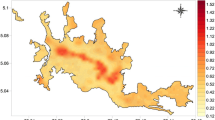Abstract
Over the past 10 years, the National Infrastructure Simulation and Analysis Center (NISAC) has conducted over 150 detailed multi-hazard, multi-infrastructure scenario analyses of a wide range of man-made and natural disasters. Using a model-based implementation of the Department of Homeland Security risk management framework, NISAC analyzes scenarios ranging from extreme-event situational awareness to long-term strategic policy for improved homeland security and resilience to these events. This article describes the essential elements of the NISAC scenario analysis process, the toolkit of subject-matter expertise and models used, with a particular focus on the economics component. An example set of Hurricane Katrina economic-analysis results is used to illustrate basic elements of NISAC economics scenario analysis.













Similar content being viewed by others
Notes
CIP policies date back to 1982 with formation of the National Security Telecommunications Advisory Committee (NSTAC), followed by Executive Order (E.O.) 13010, “Critical Infrastructure Protection in the Information Age,” and Presidential Decision Directive (PDD)-63, “Protecting America's Critical Infrastructures”.
These are: food and agriculture, banking and finance, chemical, commercial facilities, communications, critical manufacturing, dams, defense industrial base, emergency services, energy, government facilities, healthcare and public health, information technology, national monuments and icons, nuclear reactors, materials and waste, postal and shipping, transportation systems, water. Source: DHS (2012a).
Mesoeconomic thinking asserts that there are important economic structures between, but not reflected in, microeconomics and macroeconomics (the two together do not claim to cover all economics).
This contrasts slightly with the formal definition from the DHS National Infrastructure Protection Plan (DHS 2009), “The multi- or bi-directional reliance of an asset, system, network, or collection thereof, within or across sectors, on input, interaction, or other requirement from other sources in order to function properly.”
Note that these 20 reports are collectively considered to be just one, not 20, of the estimated 150 NISAC scenario analyses conducted to date.
References
Albala-Bertrand JM (1993) Natural disaster situations and growth: a macroeconomic model for sudden disaster impacts. World Dev 21(9):1417–1434
Brown TJ (2009) “Dependency indicators”, Wiley handbook of science and technology for Homeland security. Wiley, New York
Ehlen MA, Downes PS, Scholand AJ (2008) A mesoeconomic model of the regional impacts of natural and man-made disruptive events, Sandia National Laboratories SAND2009-0206 Report, Albuquerque, NM
Forrester JW (1961) Industrial dynamics. MIT Press, Portland
Glass L, Glass RJ (2008) Social contact networks for the spread of pandemic influenza in children and teenagers. BMC Public Health 8(61):1–15
Hallegatte S (2008) An adaptive regional input–output model and its application to the assessment of the economic cost of Katrina. Risk Anal 28:779–799
Hallegatte S, Przyluski V (2010) The economics of natural disasters: concepts and methods, World Bank Policy Research Working Paper 5507
Kahn ME (2005) The death toll from natural disasters: the role of income, geography, and institutions. Rev Econ Stat 87(2):271–284
Leontief WW (1986) Input–output economics, 2nd edn. Oxford University Press, New York
Noy I (2009) The macroeconomic consequences of disasters. J Dev Econ 88(2):221–231
Rinaldi S, Peerenboom J, Kelly T (2001) Identifying, understanding and analyzing critical infrastructure interdependencies. IEEE Control Syst Mag 21:11–25
Stearman JD (2000) Business dynamics: systems thinking and modeling for a complex world. Irwin McGraw-Hill, Boston
Strobl E (2011) The economic growth impact of hurricanes: evidence from U.S. coastal counties. Rev Econ Stat 93(2):575–589
U.S. Bureau of Economic Analysis (2012a) Gross-domestic-product-(GDP)-by-industry data. http://www.bea.gov/industry/gdpbyind_data.htm. Accessed 6 Aug 2012
U.S. Bureau of Economic Analysis (2012b) National economic accounts. http://www.bea.gov/national/index.htm. Accessed 6 Aug 2012
U.S. Bureau of Labor Statistics (2012) Employment, hours, and earnings from the current employment statistics survey (national). Accessed at http://www.bls.gov/ces/home.htm. Accessed 6 Aug 2012
U.S. Bureau of the Census (2009) County business patterns. http://www.census.gov/econ/cbp/index.html. Accessed 10 Aug 2009
U.S. Department of Commerce (2012) RIMS II. https://www.bea.gov/regional/rims/rimsii/. Accessed 6 Aug 2012
U.S. Department of Homeland Security (2009) National infrastructure protection plan
U.S. Department of Homeland Security (2010, Sept) DHS risk Lexicon
U.S. Department of Homeland Security (2012a) DHS | Critical Infrastructure. http://www.dhs.gov/files/programs/gc_1189168948944.shtm. Accessed 8 July 2012
U.S. Department of Homeland Security, National Infrastructure Simulation and Analysis Center (2012b) Network optimization models. http://www.sandia.gov/mission/homeland/factsheets/nisac/RNAS_factsheet.pdf. Accessed 3 Jan 2013
Author information
Authors and Affiliations
Corresponding author
Additional information
Sandia is a multi-program laboratory operated by Sandia Corporation, a Lockheed Martin Company, for the United States Department of Energy’s National Nuclear Security Administration under Contract DE-AC04-94AL85000.
Rights and permissions
About this article
Cite this article
Ehlen, M.A., Vargas, V.N. Multi-hazard, multi-infrastructure, economic scenario analysis. Environ Syst Decis 33, 60–75 (2013). https://doi.org/10.1007/s10669-013-9432-y
Published:
Issue Date:
DOI: https://doi.org/10.1007/s10669-013-9432-y




